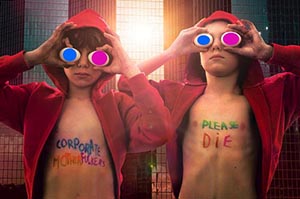
"Corporate Motherfuckers, Please Die" Flickr users protest Microsoft takeover
In order to be able to work effectively today, creative individuals must grasp the underlying principles that frame the creative act: rhythm, color, and style. Roman Jakobson (Russian linguist and literary critic, 1896-1982), an early twentieth-century Russian formalist, stated that all communication is conveyed from one person (an addresser) to another (an addressee) based on a shared context and code. The elements described in this chapter shape that context and code. Some elements are innate; others are acquired. Each of us has a natural rhythm, yet may never learn the graces that allow it to have style.
Humanity's need to express is not merely an accounting of information, fact, or figure: those acts are simply translation. Creativity is an embellishment in our quest to comprehend the unknown and unknowable, and in so doing to create new vehicles of understanding—metafora. As we sharpen our skills to manage metafora, we extend the abilities of our senses. We are then interpreting and re-interpreting experience, creating new styles. In the creation of writing, music, dance, painting, and sculpture, we constantly seek to integrate the countless combinations of inflection. Art, science, and technology pursue the same concerns of establishing our place on earth. But the role for creative people in any field is constantly to challenge existing structures, rearranging their elements into new configurations.
Metafora is the vehicle that contains and carries the message formed by the elements of structure enabling us to express ourselves through representation.
